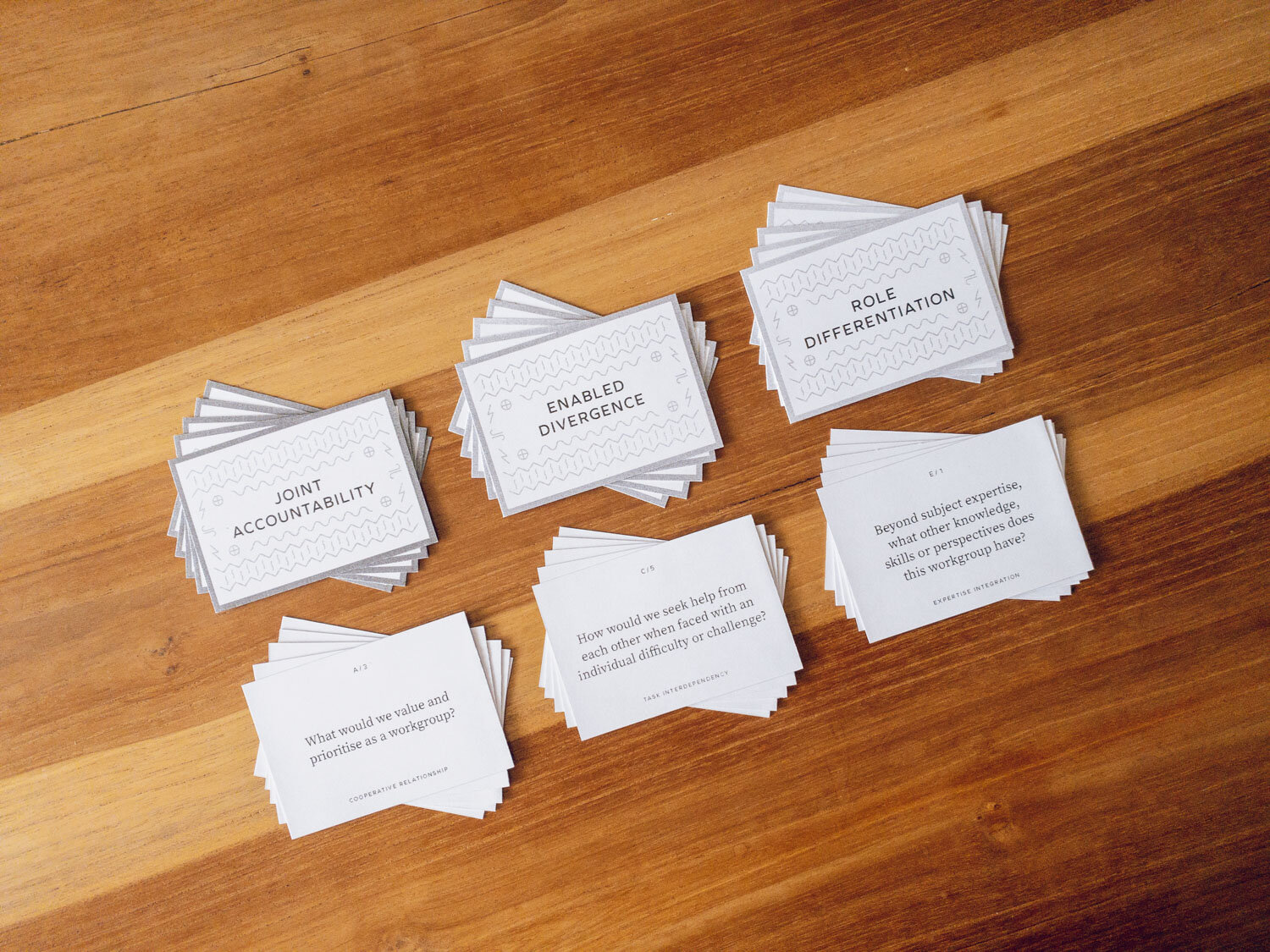
Designing Collaborative Conversations

For Design Research
The development of this design intervention is a part of a research study on collaboration in design. It serves as a representation of a larger conceptual framework that describes the key features of collaboration in design. This framework enables workgroups to recognise the extent of collaborative actions expected, through the conversational process of Collaborative Turns — an approach that brings divergent and critical disciplinary perspectives to the fore.
The intervention takes the form of a self-guided activity for a design workgroup to have exploratory and divergent conversations about their collaboration. The design was approached in two parts – the conversation topics, and the conversation process. One of the main concerns of this study has been to clarify and articulate what collaboration entails. As such, it was pertinent to use the features of collaboration in design as topics for the conversation activity. A key portion of the development was the formulation of the conversation prompts; i.e., questions to trigger open-ended conversations within the workgroup.

It would not have been enough to only provide the topics, as a workgroup may limit itself to cooperative and appeasing behaviour. The activity kit needed to encourage exploration and divergence in the conversation process. Using a ‘board game’ format for the kit’s design would provide a familiar visual language, allow for the stipulation of rules to structure the flow of the conversations, and create ‘space’ for converging and diverging conversations.

Conversations in the activity operate through four Response Moves; i.e., ‘moves’ that participants make to signal their responses. Making a Response Move in the activity is similar to turn-taking in a regular conversation but enhanced in a way that the stance of each speech act is made explicit. Unique sets of tokens were designed for participants to use and indicate their Response Moves. By placing their tokens on the Response Mats corresponding to their Response Moves, the speakers make their stances visible.


The activity was tested with members of a prospective workgroup who found the intervention to be “very helpful” or “extremely helpful” towards gaining a better understanding of what their collaboration requires, as well as a shared understanding of the features of collaboration. It prompted them to think through 'facets' of collaboration that they didn't think of before. The group believed the intervention could help them prepare and guide their collaboration.
This intervention may be customised for use in different contexts and purposes, such as business innovation, community development, and artistic practice. For more details on the research project or interest in using the activity kit with your workgroup, please get in touch. An extract of the research study is available here.
